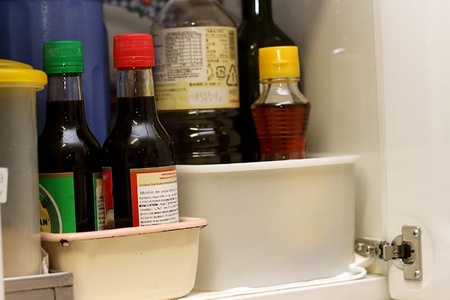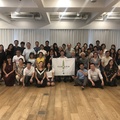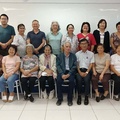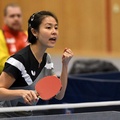I was not raised in a family which followed the strict Japanese traditions. When I was a kid, we spoke in Portuguese almost all the time. In Japanese, only a few greetings, some verbs, and names of food, places, and objects.
It was all very natural for me. So natural that I didn't realize other people may not understand.
The first confusion that I recall happened in 1986, when I was in the first year of elementary school, 6 years old. When the teacher made the call for presence, I replied:
“Hai!”—exactly the way my parents taught me to answer when I was called.
The teacher called one more time. She must have not listened, I thought.
“Hai!”—again, in a louder voice.
Since she called one more time, I decided to try another word:
“Present!” It finally worked. I guess I must had been considered absent because of that misunderstanding.
After vacations, teachers and friends usually asked what we had done. I replied that I had visited jichan and bachan, and went to haka (graveyard).
“What is that?” they asked.
I never studied in Japanese bilingual schools, although they exist in Brazil. In my classroom at that time, there were three or four more Nikkei.
Some time later, when I was nine or ten, I visited a friend’s house for the first time. It was an Italian family; we had a nice friendship.
At dinner time, there was salad. However, I was used to eating salad with shoyu. I looked for it with my eyes over the table, but didn’t find it. “They must have run out. It wouldn’t be nice if I ask,” I thought.
Nevertheless, they noticed I was bothered by something.
“It is… Where is the shoyu?
“What is that?” I couldn’t explain properly. I only said that “it is a black liquid that goes with salad.”
My friend’s mother said that she would look for it at the market. In the next visit, there was shoyu. They had even liked it and started to use in their own meals.
Similar situations happened when my friends went to my house. So that they would not have to sit on the floor, I took cushions:
“Hey, sit on the zabuton.”
“What is that?”
At that time, Japan’s image in Brazil was a distant country where people drive on the other side. The few references of the real Japanese ways was those seen in tokusatsu series such as Jaspion and Changeman.
Today, all of these are just funny memories. My “adaptation” was smooth. I soon realized that there were different languages. I understood that I knew those words because I was Nikkei.
© 2014 Henrique Minatogawa






